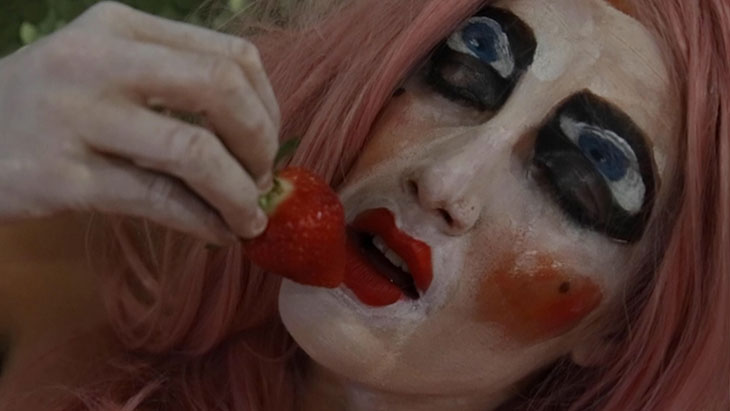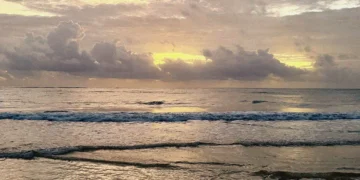
Artist MADISON BYCROFT sits down with Guest Editor NATALIJA PAUNIC to discuss the role of fiction in their work, the way they uses sculpture, and upcoming projects.
DSCENE 014 IN PRINT $12 OR DIGITAL $4.90
Read more after the jump:

In one of the interviews you gave in 2019, you mentioned “negative identity politics” and I really liked the term, as a potent storytelling method (as you used it as well). Is this something that comes up a lot in your practice? Would you talk a little bit about it? With negative identity politics, I’m interested in the limitations of what we mean by “identity” in identity politics. Often we use identity categories for important political reasons, however, many times, I feel it is unimportant. Like when someone announces that they will show the work of a “woman”, instead of an “artist.” In my own storytelling, I prefer to think about how to pay homage, how to represent or recognize characters without resorting to categories of gender, sex, race or class. To quote myself with a cringe: “I prefer my characters like flashing fish in the sea with sharp scales, cutting the palms of hands as a caution against snatching.” I’m thinking here about the poetics of unsaying – or focusing on the negative space around characters to introduce them.
I feel like fiction plays an important role in your work, as part of the process, but it also seems like some narratives and connections emerge only after things come together in your shows. How much of your content comes from reality, and how much from fiction and play? I like the idea that elements in my practice may have a mind of their own. Some things are associated or slowly associate themselves, without a clear logic. One thing is like another thing because of a color or a mood or a rhythm or intuition or something we can’t quite articulate within a language and our patterns of thought.
I think “factual” stories can be told from many perspectives. Without the certainty of objectivity, the slope between fiction and fact is quite slippery.

Do you see the exhibition as a platform for the creation of realities, or does it all remain in the domain of fiction? Is there a difference between the two? Historically, there is a difference. Certain stories are elevated to the realm of fact because of the status of the documenter, the archivist, the historian. I see the exhibition as a very subjective place where I am making worlds and experimenting with what happens when two very different things are brought close. For example, the recent video Ruses and refusals brings together a series of “anti-portraits” of Buster Keaton, Julian of Norwich, the blobfish, and Diogenes of Sinope. It is a strange combination that, hopefully, produces something else that I hadn’t planned for.

A lot of your pieces seem like they are waiting to be performed or activated, in a sense (and often they are used in performances, if I’m correct). Do you have this in mind when creating them – that even the sculptures have a dynamic component to them? My performance, sculpture, and video practices are in this way quite intertwined. I often use sculptures as props in video and performance, for example. Often sculptures that need to be “activated” are experienced by the viewer as somehow “lacking”. I’m also interested in this lack. It might gesture towards a kind of withdrawal of the work, or a refusal to be easily digested or consumed.
I think ‘factual’ stories can be told from many perspectives. without certainty of objectivity, the slope between fiction and fact is quite slippery.

How do you see your practice now that the global pandemic has entered our lives? What has changed for you, as an artist? With many others, I guess I have been thinking more directly about access. This is a good thing. There were many questions around access that I had previously not considered, image descriptions, sound descriptions, the physical inaccessibility of the exhibition space, the cost of entry. There is still something very exclusive about gallery presentations…and this has been a great opportunity to think about how to share my work differently. I don’t have any answers to this…at the same time, I’ve become a lot more aware of performance practices that somehow “lose” something crucial in online presentations.
How do you feel about the potential limitations that influence how big of an audience you’ll have, conditions in which you can make or display your art? And also, does this inspire anything new, in relation to your concepts and ideas? I’m quite happy for small audiences. At the same time, it is not impossible for audiences to be augmented online. If I must choose between two people who are engaging with my work or 100 who don’t give a shit… I’ll take the two.

Where do you see yourself in this coming period – what will you be focusing on? I have been thinking a lot about 360 degrees and the flatness of the computer screen – the orientation of our bodies when facing something flat. I am currently working on a participatory video as part of a residency with Ubisoft… there are a lot of technical details that quite frankly are way beyond me, so it has been exciting to start researching and collaborating with differently skilled people. I’m also working on my first feature film and a new performance on floating.
Keep up with Madison’s work on Instagram – @madisonbycroft




















